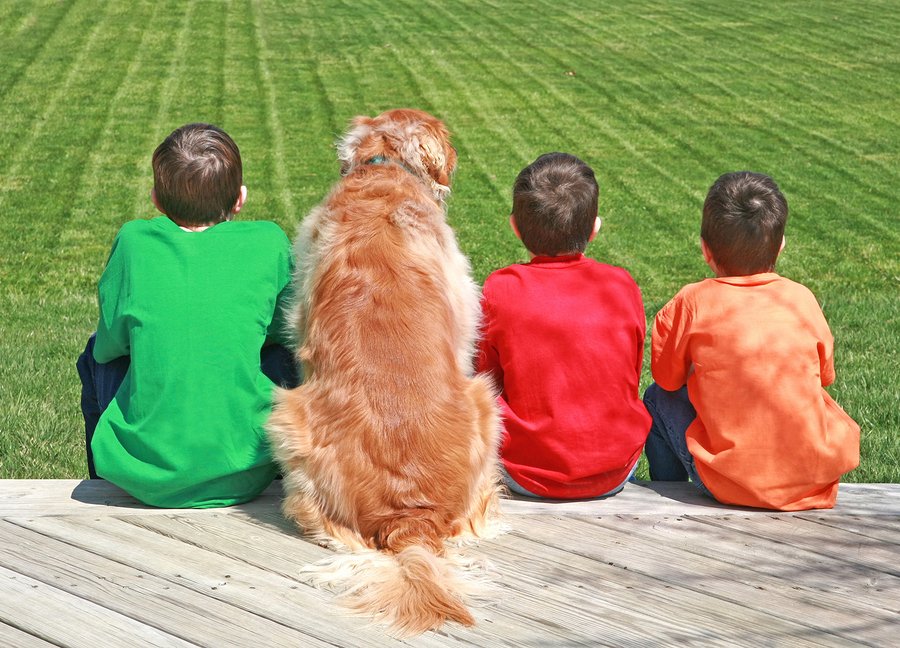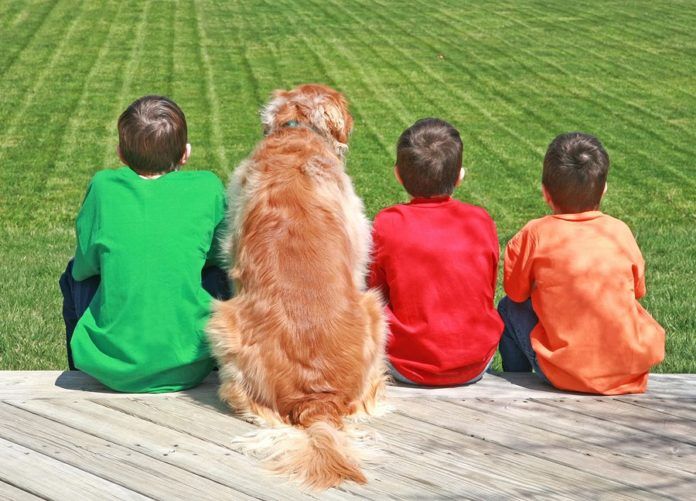

You’re really good at cooing over your new puppy, loving her up, giving her delicious treats, and in general showing her that life in your household is going to be wonderful. But within a day or two of your new dog’s arriving at your home, you should also be engaging in training. It’s not a punishment. When a dog and a person are new to each other, the motivation to communicate is quite high, so that’s a good time to start teaching her your cues for desirable behavior. Furthermore, when she gets it right, which will begin to happen quite quickly, she will feel a great sense of accomplishment — and so will you — and that will strengthen the bond between the two of you.
Training will keep your dog safe, too. “Sit” or “Come” sets her up for something much more manageable than, say, running into the road willy nilly to examine something when a car is coming. Finally, it will insure that she enjoys a good life around other people. Most people are much more welcoming to well-behaved dogs who don’t jump all over them or rip up mail coming through the slot, and so on.
The best part: training isn’t time-consuming. Just two or three two- to five-minute intervals a day (puppies have short attention spans) will help her “ace” her lessons.
But what’s the right approach? Some people talk about using a clicker, while others speak of a “magnet” method, while others still talk about “capture” and “placement.” What do all these terms mean? And which is right for your particular pup?
Fortunately, the best approach is the one you feel most comfortable with. Following are explanations of each of the four basic methods. Upon reading through them, to the extent possible, you should choose the one that’s right for you. They work to teach older dogs new tricks and behaviors, too, once they have gotten down the four basics: sit, down, leave it, and come.
Clicker method. The clicker method uses three steps with a clicker that you can buy either at a pet supply store or a party goods store. A lot of people don’t understand how a clicker enhances learning, but we will explain in a moment.
1. Click the clicker once, just once, and immediately give your puppy a treat. She doesn’t have to do anything to get it. You’re just helping her learn that there’s an association between the clicking sound and something good that follows. Repeat the clicker-treat sequence several times.
2. Click the clicker — again, once. Now you’re looking to elicit a specific behavior. Let’s say it’s “Sit.” That’s not what your new dog will do. She will jump up around or on you and start begging because she has learned that the clicking sound means a treat is coming. But don’t give it until she delivers the desired behavior — sitting — which she will finally do because she will be confused and give up. At that point, immediately click the clicker again (just once) and give a food treat, letting her know with warm praise that she has complied with your wishes. After two or three more cycles of clicking, begging, then sitting and receiving the treat right away, she will learn that it’s sitting that does the trick, making the clicker click and getting you to dispense the food.
3. Now it’s time to add the voice cue, “Sit.” If you don’t teach this part, she’ll think that every time she decides to sit, you will click the clicker and give a treat. She will finally sit, again out of confusion or frustration. It’s at that exact point that you click the clicker and offer the treat with happy praise. Bingo! Your puppy has learned her first word.
Why the clicker? Why not just the voice command? The clicker is like the pay stub you receive by e-mail that lets you know your check is already waiting for you in your bank account. It’s a cue that the good thing is coming right away, filling in that very small gap of time between the dog’s doing the right thing and getting the reward into her mouth — a good thing because dogs have short attention spans. Not all people feel comfortable using a clicker, but we find it’s a great tool for teaching dogs to behave the way you want.
Magnet method. This approach is also called the lure method, and the lure, or magnet, is food. With the “Sit” cue in mind, hold the food — a desired treat — in front of your puppy’s nose. Next, draw it slowly upward in arc-like fashion over the top of her face and then her head. As the treat rises, so will her eyes and snout. At the same time, her behind will automatically go down onto the floor. Presto — she’s sitting. You’ve gotten the desired effect and she gets the food, along with a “Hurray — you did it!” from you. Make sure you don’t relinquish the treat until her rear is firmly on the floor. That’s what will help her learn that the follow-through has to be complete.
Once she understands the game, add the word “Sit” to the sequence. First say it as she begins to lower her rump. Later, start saying it before she even makes a move. Soon enough, the verbal cue will elicit the behavior you desire without the magnet part, and voila, your dog will have learned to sit on cue.
Note: If your puppy keeps backing up as you trace her face, head, and back with the cookie, try the routine with her back already in a corner. It should work better.
Capture method. What you’re capturing with the capture method is the moment your dog happens to engage in the behavior you want to teach her to do on cue. For instance, if you see her sitting, say “Sit” and immediately reward her with a treat and praise. It’s counterintuitive — why reward a dog for something she’s already doing? — but it works.
The capture method can be used in tandem with the clicker method. It will take a few times for the puppy to make the connection between the word, her sitting, the clicking, and the reward, but she will get it. And once she does, you will no longer have to “capture” her doing what you want but can instruct her to do it.
Placement method. This method comes with some controversy among dog trainers because it requires moving your dog into the position you want instead of getting her to learn for herself what you expect. The argument goes that you could end up making life with your puppy more, instead of less, difficult with this approach; she might come to expect that you will just push her into place when you want something, leaving her believing that you find that preferable to getting her to make the moves herself.
For that reason, we are not the biggest fans of the placement method ourselves, but some people do find that it works well as a means to an end.
To get a dog to “Sit,” gently slide your thumb and forefinger along her back, in the direction of the hips. Then, with a gentle squeeze, rotate her buttocks back and down into the sitting position and immediately proffer a treat. As with the other methods, add the word cue “Sit” after a few times. It’ll all come together.
One method won’t work for all four basic commands
Of course, you can’t push your dog into the “Come” position (it’s not even a position), nor is it easy to capture your dog in the act of “leaving it.” “Come” has to be accomplished with an application of the lure method. You call out to your pet in an enthusiastic tone and drop to one knee with your arms open and a treat visible so she sees both through your animated gesture and speech — and the actual lure — that coming to you is going to lead to something good. Once you have succeeded in “luring” her over, give her the treat and a nice warm stroke on her muzzle. She’ll get the drift very quickly.
“Leave it” is often well learned with a combination of the clicker and lure method. Hold a treat (the lure) in your hand as you hold your pet on a leash, and when she goes to take it, keep it out of reach. Finally, she will give up by looking away or backing off, and at that point, click the clicker and put the treat on the floor for her to enjoy. She will soon learn that “leaving it” gets her what she wants. That’s when it’s time to add the words “Leave it.” Simply put the food treat on the floor, and when she comes over, put your foot over it and say the cue. When she stops trying to get underfoot to reach the treat, let her get to it. She’ll get the “Leave it” message after a few tries.
Once she gets the basic commands down, you can move onto more complicated stuff, like “Wait” and “Off,” the second of which is used to teach a puppy not to jump on people. Before long, you and she will be pros at expert communication and follow-through.
Note: We will cover “Wait” and “Off” in an upcoming issue.





